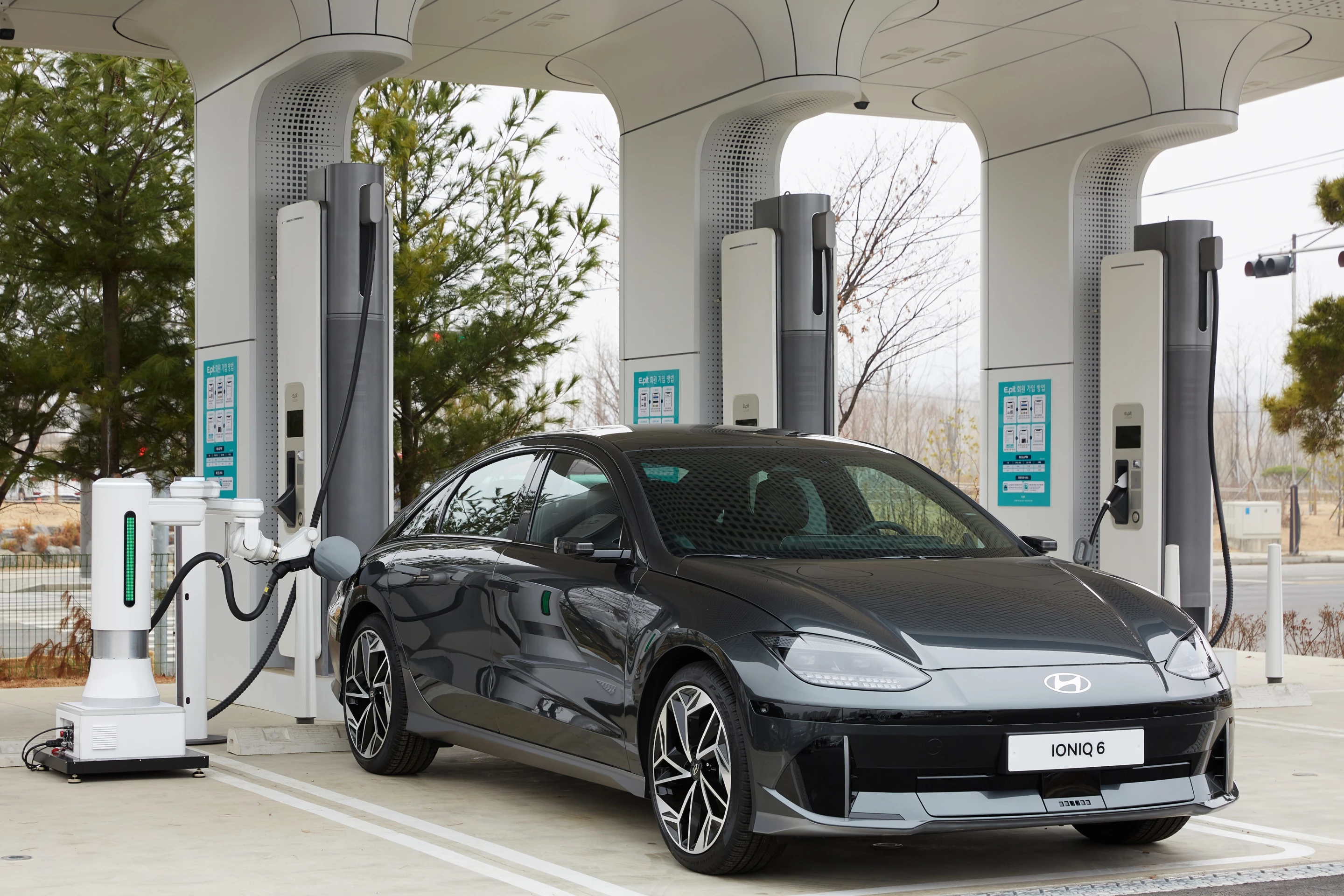For some time now, Hyundai Motor Group has been growing itself into as much a robotics company as an automaker, showing the world glimpses of a future that's both fascinating and a little terrifying. Its latest featured robot won't scale the apocalyptic rubble of future dystopias to save/finish off humanity, but it will get people moving more conveniently.
The automatic charging robot (ACR) is designed to connect and charge electric vehicles without the driver having to so much as crack a window. After showing a CGI animation of the design in 2022, Hyundai has now videoed the working prototype in action.
For its demonstration, Hyundai pairs the single-arm ACR with the swoopy, quick-charging Ioniq 6. The driver takes advantage of the Ioniq 6's autonomous parking to back the car into the charging bay from outside. The ACR then communicates with the vehicle to open the charging port, relying on a camera to identify the precise location of the port and angle at which it sits.
The robotic arm then attaches the charger to the port and begins charging, warning a pedestrian as he's about to walk directly into the cable. After charging registers as complete, the ACR retracts the charger and closes the charging port on the car.

What appears quite simple in the video involves many variables and calculations, compounding information about the vehicle's exact parking location, shape of the charging port, weather, and weight of the charging cable in order to assure a secure connection between charger and vehicle. To make it happen, Hyundai Group's Robotics Lab has developed an algorithm to apply 3D-camera-based AI technology to robots.
To ensure that the ACR is able to operate in real-world outdoor conditions, the lab built a bespoke outdoor charging station at its R&D center, then tested and improved it for operation in various conditions. The ACR is IP65 waterproof and dust-proof and capable of operating in "extreme environments," says Hyundai. A safety pole with integrated laser sensor identifies stationary and moving obstacles to prevent accidents, as it did by warning the pedestrian in the video.

"The ACR will help to make EV-charging easier and more convenient, especially in dark environments," said Dong Jin Hyun, head of Hyundai Group Robotics Lab. "It will also improve accessibility, particularly for people with mobility barriers, as charging cables become thicker and heavier to enable high-speed charging. We will continue developing the ACR for increased safety and more convenience so that all EV customers can soon benefit from using it at charging stations."
Hyundai also mentions the idea of increasing overall system efficiency by combining the ACR with autonomous parking control systems to "improve utilization by sequentially charging several parked vehicles." It doesn't hint at how that might work, but we could imagine the robot either moving between multiple vehicles or prompting each vehicle to move itself out of the charging bay after charging is complete, thereby freeing up the charger for another vehicle. Either process could prove a very useful addition at high-demand public charging sites.
The ACR isn't ready for deployment just yet, but Hyundai will show the system at the 2023 Seoul Mobility Show, which begins on March 30th.
Source: Hyundai







